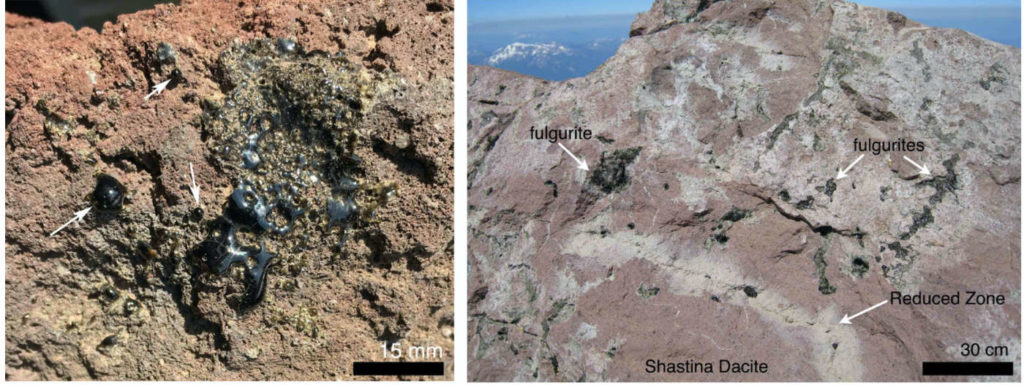We have published in collaboration with Jonathan M. Castro from the Johannes Gutenberg University of Mainz a paper in Earth and Planetary Science Letters examining the process of meteorological lightning-induced modification of coherent volcanic rocks producing fulgurites. Rock fulgurites are formed from quenched melts that are the consequence of lightning hitting rock at temperatures above 2’000 °C.

In this study, we report the first experimental reproduction of rock fulgurite microtextures and geochemical patterns in order to investigate the lightning effects on volcanic rocks. We demonstrate that the melting of volcanic target rocks produces melts of exceptional compositional diversity and that melting proceeds rapidly, by an in situ modal batch process whereby individual crystals melt and contribute small aliquots to a larger batch that is then mixed by viscous flow.

This study of volcanic fulgurites and their re-hydration signatures illustrates the potential to use them to date single paleoweather events (e.g. thunderstorm) at decadal to centuries scale.
Find out more
Castro, J.M., Keller, F., Feisel, Y., Lanari, P., Helo, C., Mueller, S., Schipper, C.I., Thomas, C. (2020) Lightning-induced geochemical and physical weathering of Cascadian volcanic peaks. Earth and Planetary Science Letters, 552, 116595. Download pdf | Visit the journal webpage | Article in Sciencemag
